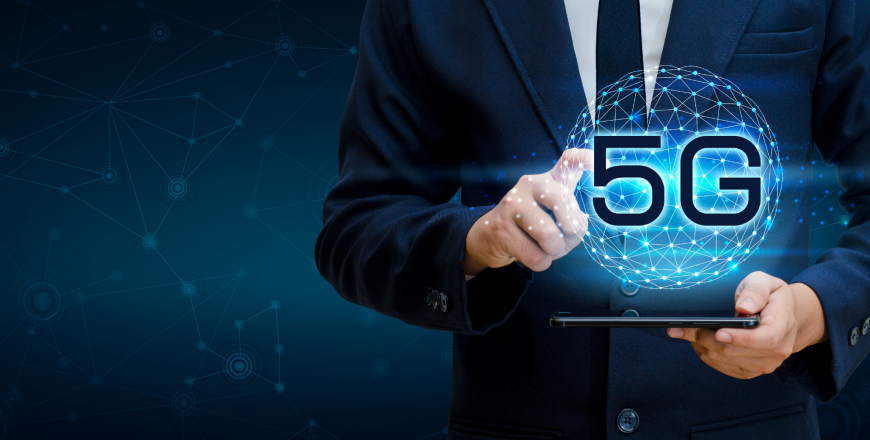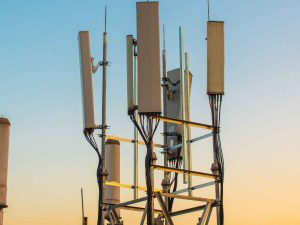Introduction to 5G Technologies and Applications

Course Overview
The advent of 5G has impacted on many industry sectors and will transform the way we live, work and conduct business. This course will provide participants with an introductory knowledge on 5G technologies, system architecture and the various services and applications that will be enabled by 5G.
By attending this course, participants will understand how this next generation of mobile technology, with features such as Enhanced Mobile Broadband (eMBB), Ultra Reliable Low Latency Communication (URLLC) and Massive IoT (mMTC), is set to radically re-shape today’s mobile communications and business landscape.
Target Audience
This course is designed for professionals who are interested to understand 5G technologies and its use cases.
- Technical Strategy Officials
- C-Level Decision Makers & Executives
- Regulators
- Engineers and Managers involved in the digital automation projects and wireless projects
- Project Managers
- IP Engineers
- Technical Product Managers
- Technical Product Marketing Professionals
- Finance Executives
Duration & Training Format
- Classroom: 3 days
- LIVE Virtual: 21 hours
- A minimum of 8 or more participants is required for a Classroom session to commence.
- A minimum of 6 or more participants is required for a LIVE Virtual session to commence.
- LIVE Virtual courses can be conducted for 5 hours or 7 hours daily. Please note that the number of training days will be extended if you opt for 5 hours daily.
Upcoming Course Dates
There are no upcoming course dates currently scheduled for this course. If you are keen on attending this course, please register your interest and indicate your preferred training dates via our course enquiry form for us to open a Classroom/LIVE Virtual class schedule for this course.
Course Objectives
At the end of this course, the participants will be able to:
- Describe what 5G is and getting the right business model (B2B, B2C, B2B2C)
- Evaluating 5G technology drivers for understanding the practical value preposition
- Master 5G architecture and solutions for monetization-specific features and capabilities
- Describe the 5G network architecture and its key technologies for service launch acceleration
- Illustrate the edge computing components and partner platform integration
- Explain the RF, PHY, MAC, and Core network operation of 5G
- Describe typical 5G Use Cases and deployment
- Gain competitive advantage learning conditions necessary to support Virtualization, IoT, Edge Computing, Machine Learning and AI
- 5G Device Evolution and Digital BSS to deploy IoT, 5G Small cells for their coexistence with pre-5G macro cells
- Describe advanced wireless technology concepts like Massive MIMO, Virtualized RAN and more
Course Outline
- Introduction to 5G Wireless Communications
- Why 5G?
- 5G as a Technology Vision
- 5G Features
- 5G Technologies & Objectives
- 5G Requirements and Specifications
- 5G Requirements
- The 10 Pillars of 5G
- Capacity Increase
- Bandwidth
- Spectral Efficiency
- Variety of Services and Applications
- Variety of Device Types
- Power Consumption
- Disruptive Network Technologies
- Resilience of the Network
- Pervasive Networks
- Internet of Things (IoT) and Device-to-Device (D2D) Communication
- Ubiquitous Connectivity and Computing
- 5G Vision
- 5G Standardization
- 3GPP Evolution and 5GPP
- 5G Infrastructure PPP
- IEEE
- Horizon 2020 Framework Programme
- METIS Project
- 5G Innovation Centre
- Visions of Companies
- 5G in Europe, North America and Asia
- 5G Architecture
- 5G Mobile Networks
- Heterogeneous Networks & Small Cells
- Capacity Limits
- Desification
- Mobile Data Demands
- Demand vs. Capacity vs. Delay vs. QoE
- Co-operative Networks
- Diversity and Relaying Strategies
- PHY and MAC Layer Protocols
- Deployment and Performance Evaluation
- Cognitive Radio
- Dynamici Spectrum Optimization
- Multi-Technology & Multi-Tier Carrier Aggregation
- Energy Efficiency
- White Spaces for 5G
- 5G Broadcast Broadband Architecture
- SON Evolution for 5G
- Mastering Network Virtualization
- Why Virtualize – Can you Live with Legacy + Modern
- NFVI & VIM
- Dissecting Private and Public Cloud Environments
- Open Source – ONAP, OSM, CORD
- DevOps and NetOps
- Hybrid Operational Models
- Security for 5G Wireless Communications
- System Architecture
- Potential Security Issues
- User Equipment
- Access Network
- Core Network
- IP Network
- IoT – IIoT, CloT, IoE
- Information Blast
- Million IoT Standards
- Practical IoT Architecture, Interfaces, Layers
- Transfer and Security
- Devices & Management – NB IoT, LTE M, Cat M1
- 5G Operational Scenarios
- 5G Implementation Roadmap
- Capacity and Performance
- 5G Evaluation Tools and Testbeds
- Examples of 5G Scenarios and its Technology Components
- Edge Computing
- Standardization and Overview
- MEC Application Enablement Framework
- MEC Services
- MEC Deployment Options in 3GPP 5GS
- CUPS and Common API Framework
- MEC Impact on Existing Operational Systems
- Case Studies
- Factory Automation
- Smart Warehouses
- Smart Cities
- Enhanced Autonomous Transport V2X – Vehicle Telematics
- Mining and Oil & Gas Automation
- Ports
- Stadiums
- Remote Control Centers
- Accelerated Real-Time Gaming
- Collaborative and Mobile Robots
- Video Surveillance and Security
- 5G First Responders
- Emergency Management with Drones
- COVID Solutions
Pre-requisites
- A basic knowledge of wireless technologies
- A basic understanding of IP-based communications
- Some understanding and experience with IT infrastructure (i.e. Ethernet, Switches, Routers)
- Recognize the security measures required for 5G



